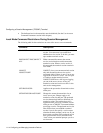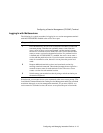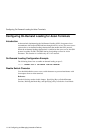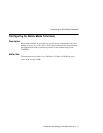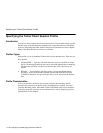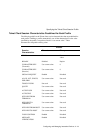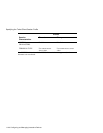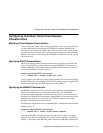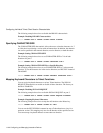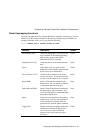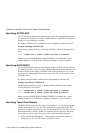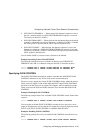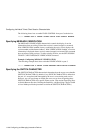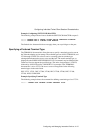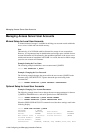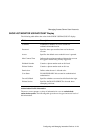
Configuring Individual Telnet Client Session Characteristics
11-22 Configuring and Managing Interactive Devices
The following example shows how to disable the BINARY characteristic:
Example: Disabling BINARY Characteristics
Local> CHANGE PORT 5 TELNET CLIENT BINARY DISABLE
Specifying CHARACTER SIZE
The CHARACTER SIZE characteristic allows the user to select the character size, 7-
or 8-bit, that is used during a session with an Internet host. In addition, the character
size can be specified in the transmit direction, receive direction, or both directions.
Example: Setting CHARACTER SIZE
The following example shows how to set CHARACTER SIZE to 7-bit in both
directions for port 5:
Local> CHANGE PORT 5 TELNET CLIENT CHARACTER SIZE 7
Example: Setting CHARACTER SIZE for a Specific Direction
The following example shows how to set CHARACTER SIZE to 7 in the transmit
direction. To set the character size in the receive direction, use RECEIVE instead of
TRANSMIT.
Local> CHANGE PORT 5 TELNET CLIENT TRANSMIT CHARACTER SIZE 7
Mapping Keyboard Characters to Telnet Functions
You can assign keyboard characters to various Telnet functions. The SIGNAL
REQUEST characteristic can enable or disable all these functions. The factory-set
default is ENABLED.
Example: Disabling SIGNAL REQUEST
The following example shows how to disable SIGNAL REQUEST on port 5:
Local> CHANGE PORT 5 TELNET CLIENT SIGNAL REQUEST DISABLED
Example: Mapping Keyboard Characters
The following example shows how to map the AO function to the Delete key:
Local> CHANGE PORT 5 TELNET CLIENT AO <DEL>
You can use the SET SESSION command to map a Telnet function to a key for a
particular session. This mapping only lasts for the duration of the specified session.
You cannot map a keyboard character to more than one function.



